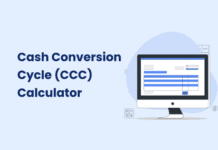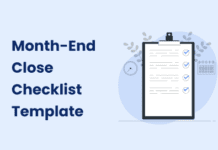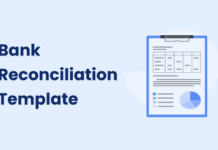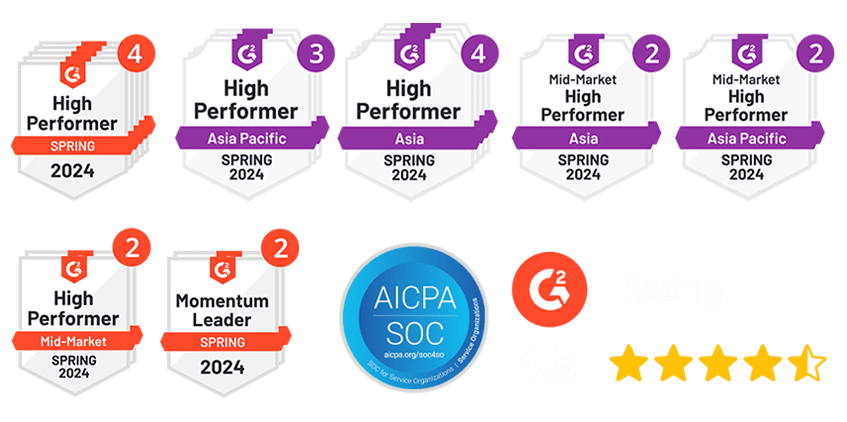Financial statements – the income statement, balance sheet, and cash flow statement – provide an accurate picture of your financial health, offering invaluable insights for decision-making. Understanding your business’s financial standing is essential for any small business owner.
This guide provides an overview of these crucial statements and shows how they can drive your business’s success.
What Is a Financial Statement?
Financial statements are a group of formal reports showing a company’s financial results. These results may reflect a given period, as with income and cash flow statements. Or cover a snapshot of a specific moment, as with a balance sheet.
The three major financial statements are the income statement, balance sheet, and cash flow statement. By understanding the information they provide, business owners can make informed decisions to improve financial performance.
Who Uses Financial Statements?
Many entities find it helpful to analyze an organization’s financial statements.
- Management: Understanding financial health helps leaders make informed decisions and plans.
- Investors & Creditors: Evidence of financial viability is essential for securing investment and credit.
- Government: Authorities require financial statements to verify accurate tax payments.
- Vendors: Suppliers may use financial statements to decide on extending credit.
- Competitors: Businesses often assess competitors’ financial statements to benchmark their performance and identify areas of improvement.
Why are Financial Statements Important for Small Businesses?
Regularly analyzing your financial statements is vital to ensuring profitability and a healthy cash flow. They track revenue, profits, assets, liabilities, and net cash flow, providing a comprehensive understanding of your financial performance.
By generating a complete set of financial reports, businesses can enjoy benefits like identifying trends, tracking real-time performance, managing assets and debts, and staying on top of cash flow health.
- Identify Trends
Look at several financial statement examples back to back, and you can plot trends from individual results. Adhering to regular reporting makes it easier to look at performance over time. All you have to do is compare specific results to the ones before it.
Say that after six consecutive monthly cash flow reports, you spot a downward trend in net cash flow. Now that you’re aware of declining performance, you can dig deeper into the problem.
- Track Performance In Real-Time
With financial statements, you can see your performance in real-time. Financial reports might cover specific periods, like a quarter or a year.
But, there’s no stopping you from generating reports on the fly. Want to know how well you did in profits compared to expenses this week? Make an income statement just for that period.
Using accounting software lets you generate financial reports with ease. Keen on comprehensive cash flow tracking? Complement your software with a cash management tool like Peakflo.
- Manage Assets & Debts
View the financial statement examples of successful businesses, and you’ll find a healthy debt-to-asset ratio. A company’s amount of debt impacts its financial health. A balance sheet lets you look at assets and liabilities separately to plan strategies for improving both.
- Stay On Top of Cash Flow Health
You’ve heard it a lot. Cash flow is the lifeblood of a business. Your financial reports will help ensure that you have enough cash to grow your business.
You can immediately gauge your business’s money flow by creating a cash flow report. Cross-reference that with an income statement to see if cash grows alongside profits.
Three Major Small Business Financial Statements (And How to Prepare Them)
Putting together a financial report begins with a company’s bookkeeping. Bookkeeping is the practice of tracking and recording a company’s day-to-day transactions. Companies later summarize these records into helpful financial statements.
Financial reports can be tedious to compile, but you can speed up the process with software. Many accounting tools feature reporting functions to help businesses generate accurate reports quickly.
There are three main financial statements that you need for financial reporting: the income statement, the balance sheet, and the statement of cash flows. Each of these statements provides important information about your company’s financial health and performance.
1. Income Statement
An income statement, also known as a profit and loss statement, displays a company’s revenues and expenses over a specified period.
This statement shows whether a business is making a profit or loss, revealing how much you earned (revenue) and how much you spent (expenses).
It’s typically prepared quarterly or annually, but can also be created for any chosen period, including weekly or monthly.
Steps to Prepare an Income Statement
- Generate a Trial Balance: This report shows the end balance of each account in the general ledger. This process can be quickly done using accounting software.
- Calculate Revenue: Determine the total amount of all revenue entries on the trial balance, including sales made on credit.
- Calculate Cost of Goods Sold (COGS): COGS is the direct cost of producing your goods or services, such as raw materials and labor.
- Calculate Gross Profit: Subtract COGS from revenue to determine the gross profit.
- Include Operating Expenses: Include the total amount of every operating expense item on your trial balance. These can include General & Administrative, Marketing, and R&D costs.
- Calculate Pre-Tax Income and Income Tax: Subtract total expenses from gross profit to arrive at earnings before tax. Then, calculate the tax payable, which is a percentage of pre-tax income.
- Calculate Net Earnings: This is your company’s profit during the period, calculated by subtracting the income tax from pre-tax income.
2. Balance Sheet
Unlike an income statement, a balance sheet is a snapshot in time. It covers your financial situation here and now rather than during a specific time range.
A balance sheet provides a snapshot of your financial situation at a specific moment, detailing your company’s assets, liabilities, and owner’s equity.
As per accounting rules, assets must always equal liabilities plus equity.
You may notice that our example displays five consecutive years. As with every other financial statement, comparisons allow you to evaluate performance to improve your financial planning.
Steps to Preparing a Balance Sheet
- Choose a Regular Date: Depending on your business, you can prepare balance sheets weekly, monthly, or quarterly.
- List All Your Assets: Current assets include cash, accounts receivable, or anything consumed within a year. Long-term assets are those that can’t be converted to cash within one year.
- Calculate Total Assets: Add every asset line item.
- List All Your Liabilities: Current liabilities are any debt or obligation due within a year, while long-term liabilities are debts that will take longer to pay off.
- Calculate Total Liabilities: Add all liability line items.
- Determine Owner’s Equity: Subtract your total liabilities from your total assets. This amount represents the net assets that belong to the owner.
- Verify the Accounting Equation: Ensure that Assets = Liabilities + Owner’s Equity. If it doesn’t balance, recheck the numbers.
3. Cash Flow Statement
The Cash Flow Statement reports the cash generated and used during a time period, categorizing cash flows into operating, investing, and financing activities.
As with our financial statement examples, a cash flow statement has three parts: cash flow from operations, investments, and financing activities.
There are also two methods of writing a cash flow statement: direct and indirect. The indirect method is the most commonly used by businesses, and it’s the one we’re going to cover in this guide.
You can see that the cash flow statements above are lined up to give a preview of performance year-over-year.
Understanding cash flow helps manage the business’s liquidity, ensuring it can cover day-to-day operations and pay its bills.
Steps to Preparing a Cash Flow Statement
Steps to Prepare a Cash Flow Statement
- Start with Net Income: This is the starting point for the cash flow statement and is taken from the Income Statement.
- Adjust for Non-Cash Transactions: Add back depreciation and other non-cash expenses, then subtract gains and add losses from the income statement.
- Record Changes in Operating Activities: Include changes in accounts receivable, inventory, accounts payable, and accrued expenses.
- Document Cash Flow from Investing Activities: Include cash spent on long-term assets and received from selling them.
- Identify Cash Flow from Financing Activities: Include changes in debt, loans, and equity capital.
- Calculate the Net Increase or Decrease in Cash: Add/subtract cash flows from operating, investing, and financing activities.
- Confirm your Ending Cash Balance: Add the net increase or decrease in cash to the starting cash balance.
Make Your Life Easier with Software
If you use accounting software like Xero or QuickBooks, you’ll have little trouble generating financial statements. These programs can do it for you based on your records. Accounting software is efficient in its rights. But if you want to focus on pure cash management, connect a tool like Peakflo.
Handle your cash management and AR collection like a pro with Peakflo’s cash flow-focused advanced reporting, forecasting, and automation.

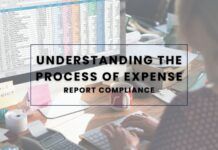







![Why AI Sales Calls Are Making Good Sales Reps Even Better [2025 Guide] ai sales calls](https://cdn-kmjmp.nitrocdn.com/YvtqmrsiHUxqerlSiZgbfzqqTARWTElr/assets/images/optimized/rev-834053b/blog.peakflo.co/wp-content/uploads/2025/09/65168cf6-3001-4733-8cbc-12d5684cf449-218x150.webp)










